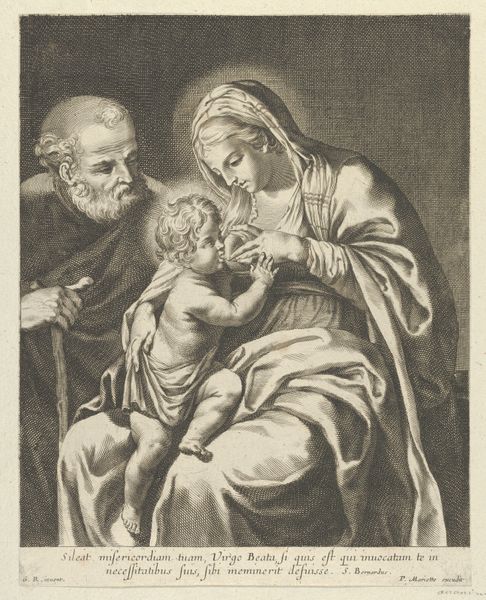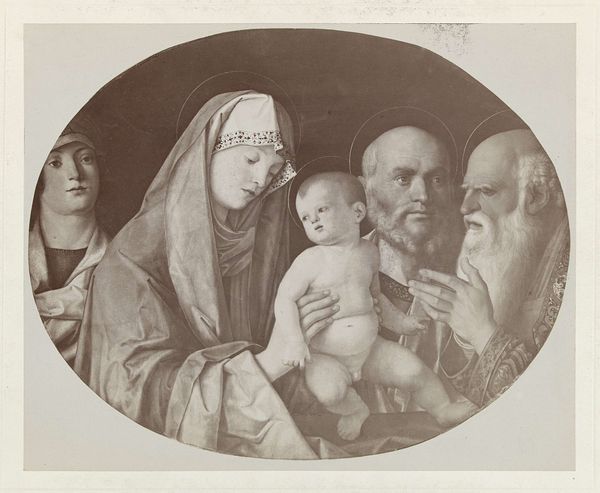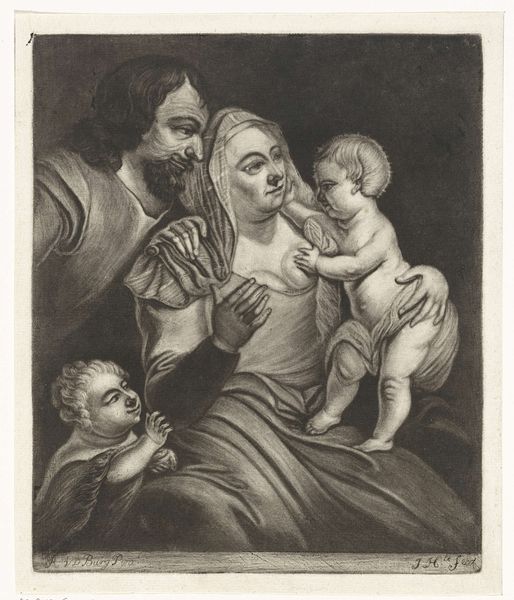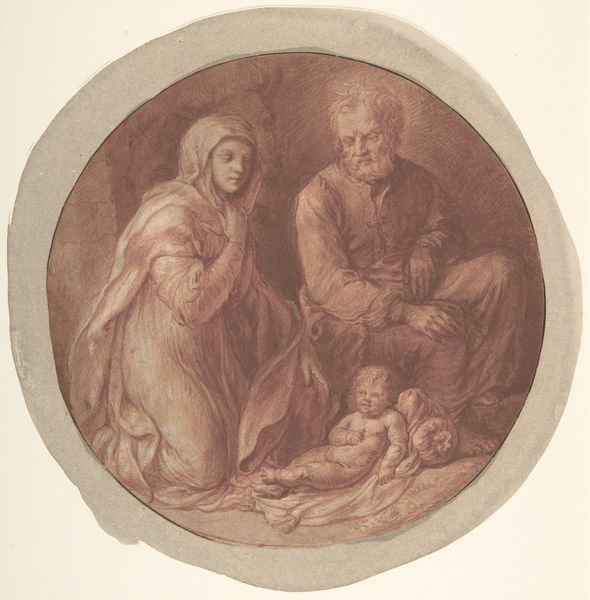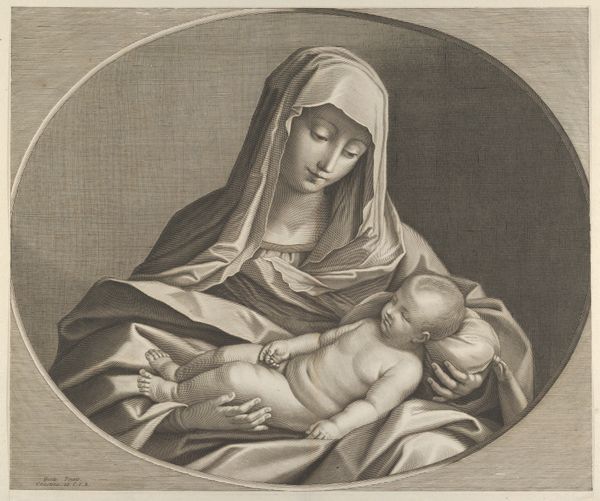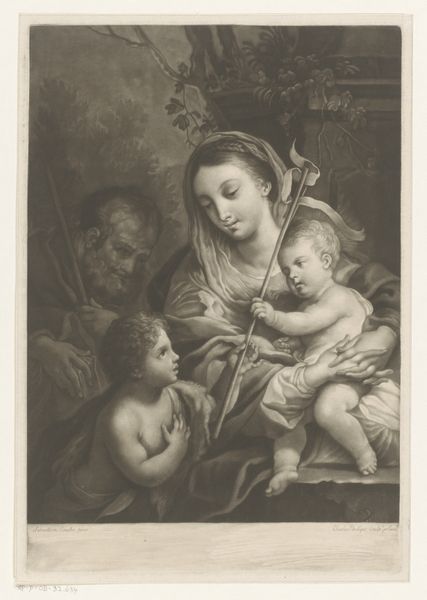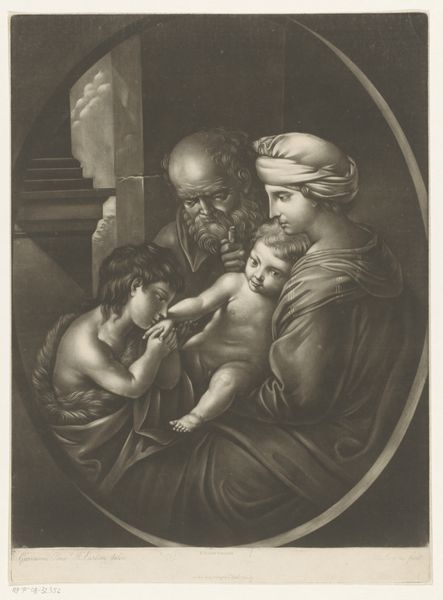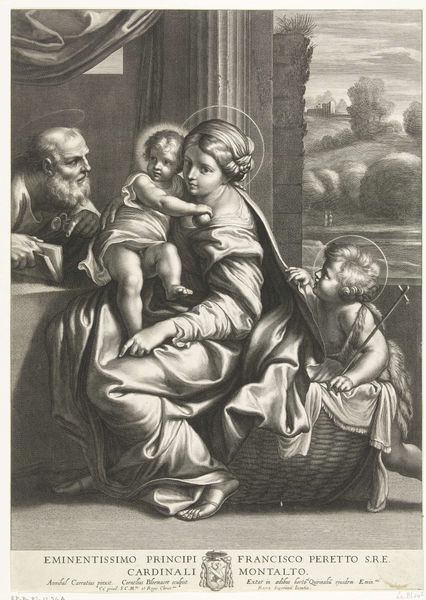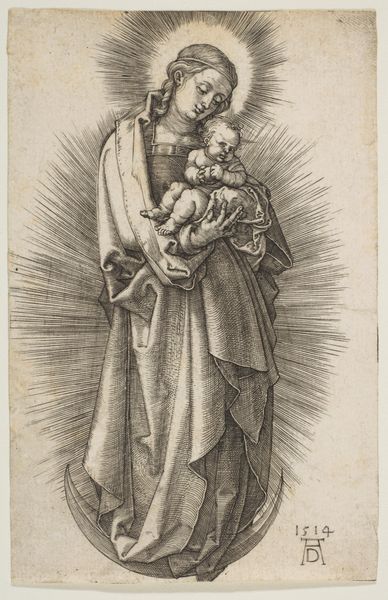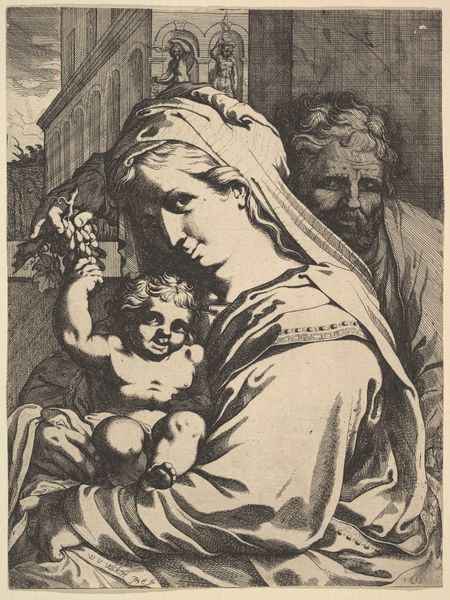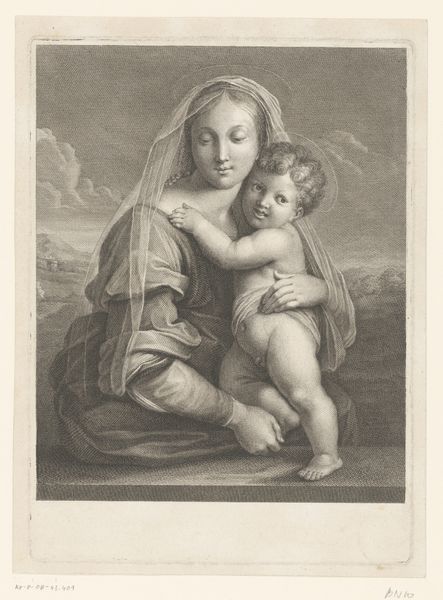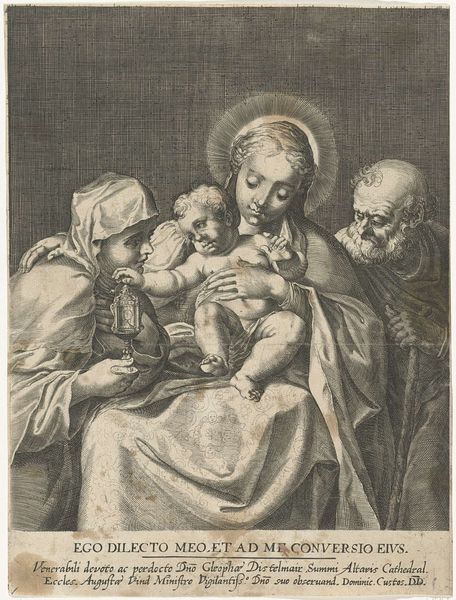
print, engraving
#
portrait
#
baroque
# print
#
history-painting
#
engraving
Dimensions: height 499 mm, width 609 mm
Copyright: Rijks Museum: Open Domain
Curator: This engraving, titled "Heilige Familie," presents us with the Holy Family, attributed to Nicolas Bazin, sometime between 1643 and 1710. The piece is a testament to Baroque portraiture. Editor: It's striking how peaceful the composition feels. The child appears to be sleeping, completely relaxed in their mother's arms. You can almost feel the weight of the body and warmth between them despite this being print work. Curator: And prints such as these played an important role, weren't just images, but crucial instruments in disseminating religious iconography. They brought such imagery into homes, embedding these visuals within the everyday lives of people and promoting specific religious interpretations and moral lessons, authorized versions, really. Editor: Absolutely. When you think about the production of this engraving, someone had to translate a potentially much larger painting into these fine lines on a copper plate, laboriously etching away at the material to create this image. You see all these careful marks; all the subtle modeling done purely by density and direction. How amazing it's then printed en masse? Curator: It also suggests a standardization, perhaps even mass production, challenging traditional artisanal crafts and contributing to what was at the time, an ever-expanding visual culture tied into religious institutions. These images were commodities, circulating within very specific social and religious structures. Editor: It definitely underscores the changing nature of artistic labor and the commercialization of art during the Baroque era. It wasn’t just about individual genius; it was about craft, reproduction, and distribution, reaching an audience in a totally new and transformative manner, making images like this almost… common. Curator: I think that hits on something essential – the convergence of art, religion, and burgeoning capitalist practices in shaping popular perceptions. We see those dynamics captured in the circulation and reception of a relatively humble piece like this one. Editor: Precisely. A beautiful, intimate object born out of complex materials and processes reflecting vast shifts of religious, social, and artistic economies of the day. Curator: It's a great reminder that art history isn’t just about the genius or artists but the social life of images. Editor: It is fascinating to think about this in terms of production, materials, and consumption of art beyond conventional gallery.
Comments
No comments
Be the first to comment and join the conversation on the ultimate creative platform.
